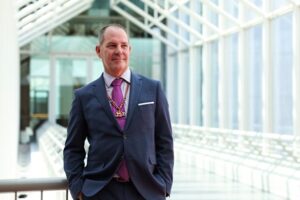
Indigenous advocates, led by elder Uncle Robbie Thorpe, are calling for improved access to a burial site in Kings Domain, Melbourne. The site, which serves as a resting place for the remains of 38 Indigenous people, has been largely overlooked and remains difficult for many to reach. Thorpe emphasizes that this location holds significant cultural importance for First Nations people and deserves greater recognition and accessibility.
Historical Significance of Kings Domain
The area surrounding Kings Domain has served as a ceremonial space for tens of thousands of years. In 1985, the remains of Indigenous individuals from various tribes across Victoria were repatriated by the Museum of Victoria and laid to rest in this location. A granite rock marks their burial site, accompanied by a small bronze plaque that is often hidden from view, symbolizing the broader marginalization faced by Aboriginal communities.
“It’s sort of symbolic of what’s happened to Aboriginal people in this country,” Thorpe states while standing near a fire at Camp Sovereignty, which is located adjacent to the Botanic Gardens. “It’s out of sight, basically, and out of mind.” The visibility and accessibility of this site are critical for Indigenous elders and community members, who often struggle to visit due to its challenging location.
Proposed Changes for Accessibility
Thorpe, a member of the Gunaikurnai nation, along with other advocates, is pushing for the area to be recognized as a ceremonial space. They are advocating for a curving walkway designed in collaboration with architects Fender Katsalidis. This proposed pathway would facilitate access to the burial site, providing a permanent space for ceremonial fires, the introduction of Indigenous plantings, and a temporary pavilion.
The current inaccessibility of the site poses significant barriers. Thorpe highlights that individuals in wheelchairs have “no hope” of visiting the burial ground as it stands. The advocates are determined to see changes implemented that would allow greater participation in honoring the ancestors memorialized at Kings Domain.
The push for improved access is not just about physical changes; it reflects a broader desire for recognition and respect for Indigenous culture and history. Advocates believe that enhancing this site will play a vital role in acknowledging the significance of Indigenous heritage within the community.
As discussions progress, the hope remains that Kings Domain will evolve into a space that honors its past while being accessible to all, fostering a deeper connection between the land, its history, and its people.






